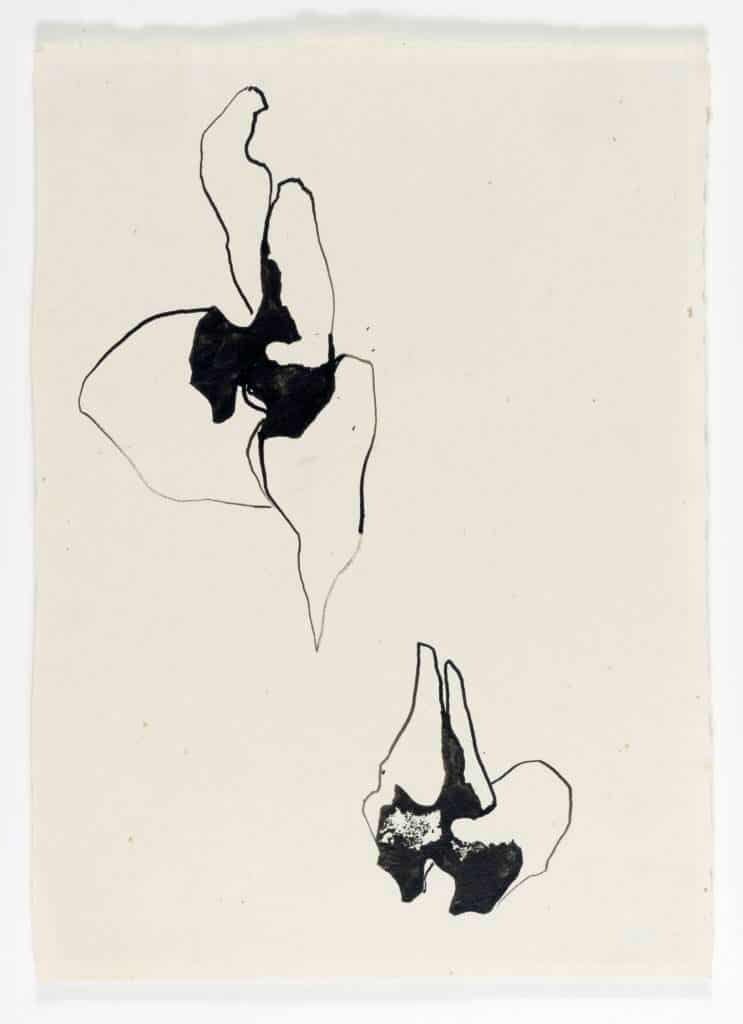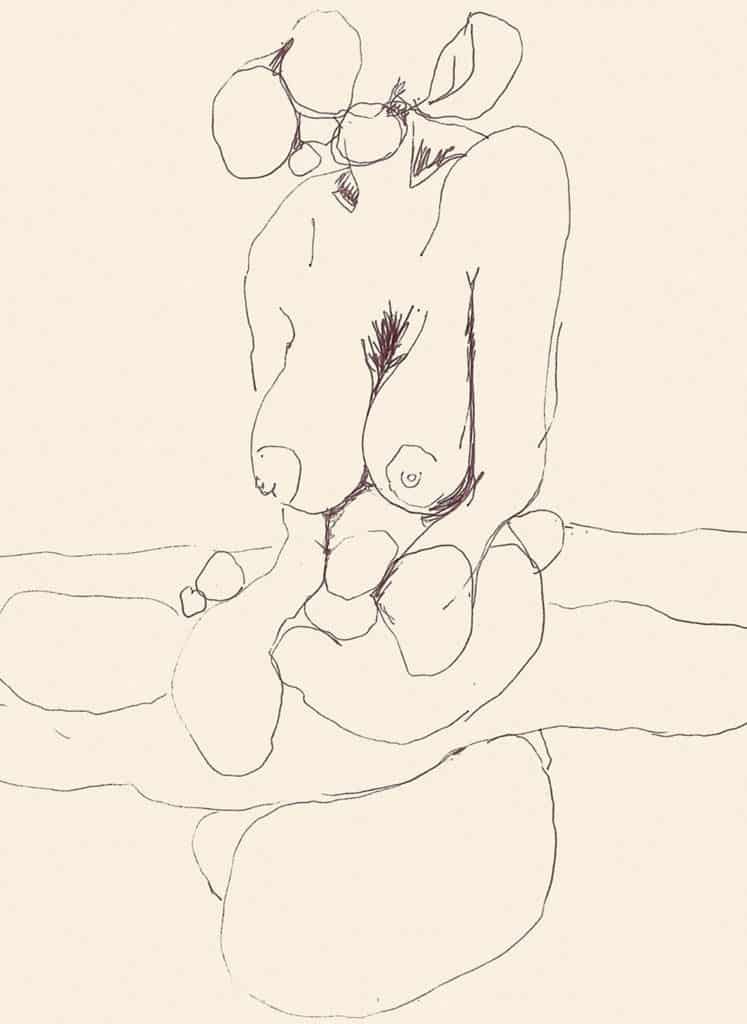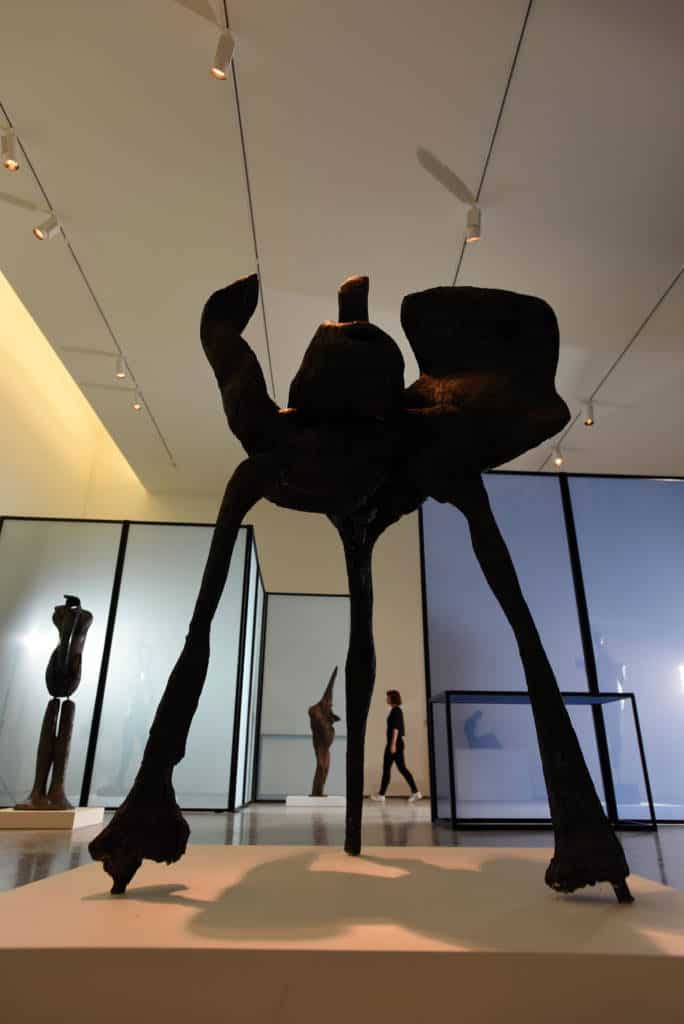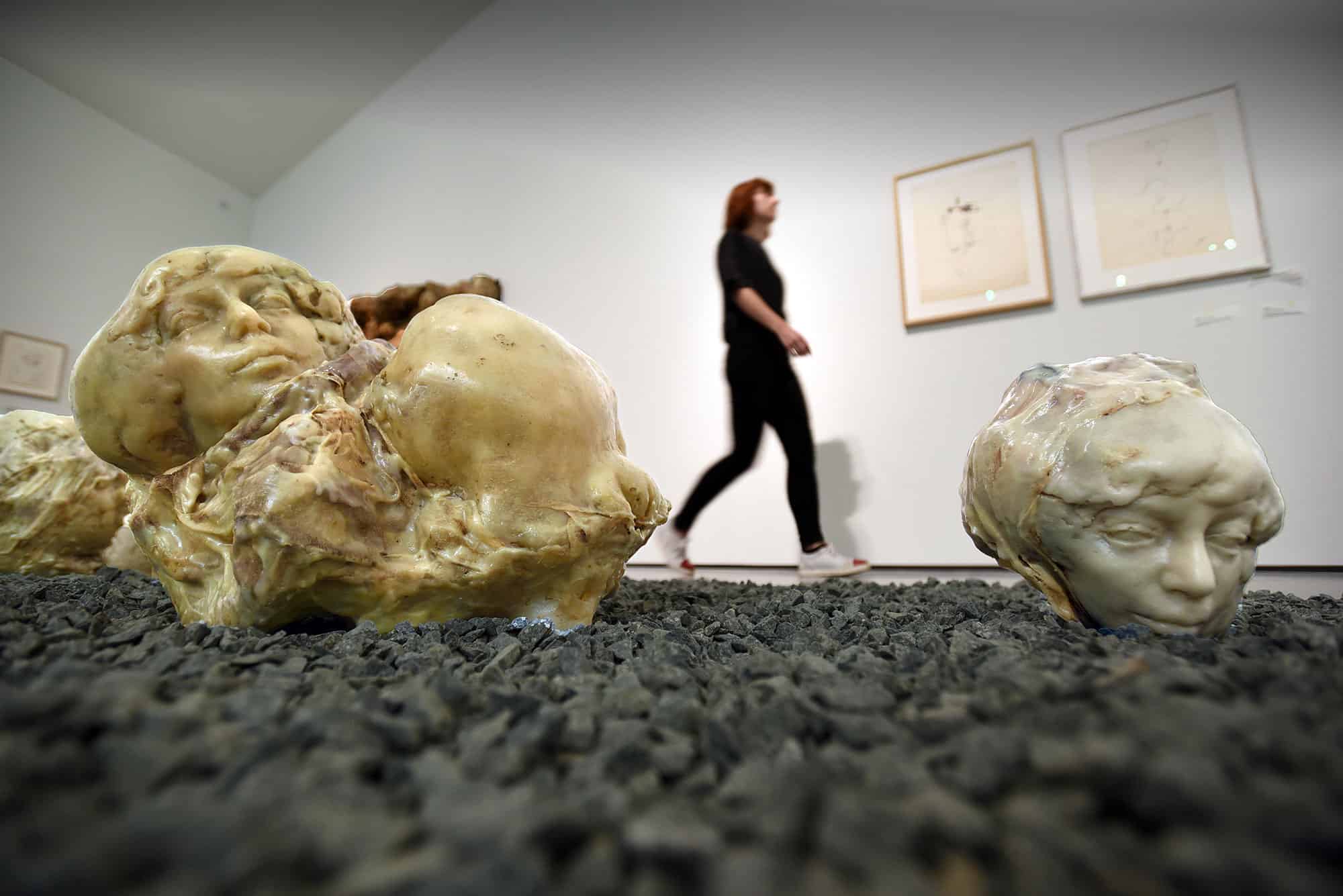
Alina Szapocznikow
At the entrance to the gallery lies a leg, the limb of the artist Alina Szapocznikow (1926–1973), cast in plaster. This modest and early in her career sculpture, the first cast of her own body, is the clue to the whole exhibition at Hepworth Wakefield. It sums up the way Szapocznikow worked, using her own body to remember and conserve the unstable. The leg seems to kick the viewer in the face. It could be a metaphor for Szapocznikow herself: she was small and sweet-looking yet in her work she was powerful and passionate.
Human Landscapes is the first survey of Szapocznikow’s work in the UK, which spans from her early work in 1954 to her premature death. The presented works are on loan from the Estate of Alina Szapocznikow, seven Polish museums and a number of private collections. For British audiences this exhibition is a revelation, showing the work of ‘the long-overlooked’ and prolific artist. For a Pole, like me, it is a posthumous triumph of one of the most important and innovative artists of the 20th century. Szapocznikow’s experiments with form and the bodily experience to understand the human condition made her one of the most important Polish post-war artists. While she is celebrated in Poland, in the UK she is almost completely unknown; until now.
Untitled, c. 1959-60, ink on laid paper
Bust length figure of a woman, headless 2, c. 1971, felt tip on paper perforated along the left edge, private collection
Szapocznikow was born in an assimilated Jewish family in Kalisz. During World War II she went through the Łódź ghetto and later the Auschwitz concentration camp. At the end of the war, she was released from a camp in Czechoslovakia. Thinking that none of her family had survived, Szapocznikow obtained Czechoslovak citizenship and decided to become an artist, receiving a classical training in sculpture. She found her mother and returned to Poland in 1951, where she became recognised, exhibiting abroad and representing Poland at the 31st Venice Biennale in 1962. Twelve years after her return to the country and after her mother’s death she was ready to move again, this time to France. She knew Paris from her time as a student and was hoping for more international career from there. Szapocznikow was truly cosmopolitan. She was fluent in Polish, Czech, French and knew some English. Her links with Poland remained strong throughout her life, visiting and always in touch with friends there.
The exhibition is arranged chronologically and introduces consecutive phases of Szapocznikow’s artistic practice. The first two works in the show are figurative sculptures of young women (First Love, 1954, Difficult Age, 1956). Szapocznikow used simple forms, compact heads lifted above elongated necks, praising youth and beauty. As the exhibition progresses, the work becomes increasingly experimental, hovering between abstraction and the figurative representation of the body. One of the most unusual of her works in the show is inspired by nature, abstract Bird (1959), made in cement and iron. The sculpture miraculously was found in a collector’s apartment in New York State, last year and exhibited here for the first time since 1961. Both Bird and referencing biological forms bronze Maria Magdalena (1957) have narrow bases and are vertically elongated, as if they were air bound, escaping the human condition. Perhaps Polish romantic cultural tradition with sublimation and egotism of suffering, as well as christianity had a significant influence on Szapocznikow.
While Szapocznikow is best known for her sculptures and experiments with different (sometimes toxic) materials, including polyester resin, electrical wiring, plastic foil, and polyurethane foam, she also drew compulsively. The exhibition presents over fifty sketches – studies for sculptures as well as abstract organic forms, made for the pleasure of drawing, which highlight the lines in her work. Translucent screens, inspired by those found in the artist’s studio, were specially designed for the show and used as room dividers. Their translucency brings up the linear aspects of Szapocznikow’s sculptures.
Untitled, c. 1959-60, ink on laid paper
Illuminated Lips,1966, coloured polyester resin, electrical wiring and metal, courtesy The Estate of Alina Szapocznikow _ Piotr Stanislawski, Galerie Loevenbruck, Paris
Soon after her move to Paris, Szapocznikow’s bodies start to become more monstrous. One of her early Parisian sculptures, Machine en Chair (1963-64) is a semi abstract, three legged form. It appears almost organic, but also employs elements of machinery. The forms from this period tend to have either too many or too few legs. Szapocznikow never talked about her experience of the war and the Holocaust. Yet the work that she produced in Paris points strongly to her traumatic experience.
Self Portrait I (1966) is one of rare works by Szapocznikow where she used marble. The torso of the bust is made out of marble, however the head is replaced with a resin, almost abstract, circle. Perhaps marble was too classical, not relevant to modern life, so she decided to combine it with resin, more unstable, degrading, cheap but also colourful, and having flesh-like qualities. She used resin a lot in 1960s, also in two of the major works in the exhibition – standing female nudes, with fragments of body parts multiplying, giving them dramatic character. Bouquet II (1966) contains casts of mouth changing into flowers. In Illuminated (1966) mouth and breast casts are mounted on figure’s neck forming a monstrous head, the upper part of which is illuminated. She has taken the critique of the objectification of female body and consumerist culture even further. Casts of breasts replace the whole sculpture in Lamps, transforming them in “utilitarian” design-like objects, where body parts are ‘in service’. She also made a tondo-shaped cast of a belly, which was multiplied and became fully functioning cushions. It is possible that the critique came from her personal experience of misogyny, which she encountered in Paris. Her later lamp Lampe III/ Fetish IX (1970) in the form of a breast placed on a baroque-like drapery, might be an ironic celebration of breast or maybe a tribute to the body part which caused Szapocznikow so much pain.

Human Landscapes the first UK retrospective exhibition of the work of Polish artist Alina Szapocznikow 1926-1973 at The Hepworth Wakefield. Photo by Guzelian
Tumours Personified. 1971, polyester glass, wool, paper, gauze, courtesy Zachęta – National Gallery of Art Warsaw photo by Guzelian
In 1969 she was diagnosed with breast cancer, which later caused her premature death. It is not surprising to find references to the illness in her works, showed in the final chapter of the exhibition. She used casts of her own face and fragments of photographs in Tumours Personified (1971), where the body is not only fragmented but seem to uncontrollably replicate itself. Formless tumours placed on gravel are autobiographical, representing how the illness had taken over Szapocznikow’s life. It is not unlikely that toxic materials used in her work contributed to her death. She predicted it three years before she died in work entitled Alina’s Funeral (1970), an abstract, amorphous object made out of polyester resin and the artist’s personal items. Decaying character of this work suggests the final state of existence, when the body is claimed back by earth. Her final works from the series Herbarium push borders of bodily representation even further, revealing its fragility and morbidity. Szapocznikow, almost like an anatomist, created casts of her own and her son’s body pressed and flattened, as if between the sheets of a herbarium. Body became an object once again, this time the object of science.
Hepworth Wakefield takes its name from the giant of British sculpture, who happened to be a woman – Barbara Hepworth. Hepworth was recognised during her lifetime, unlike Szapocznikow who (in spite of a relative success) felt under-appreciated. Her work was perhaps too contemporary for the time, with new, strange materials, talking about taboo, making sculptures with abject qualities, touching the most vulnerable aspects of our existence. 21st century has brought Szapocznikow posthumous, but growing, recognition outside of Poland. Since 2011 there have been a number of important Szapocznikow shows, including MoMA in New York and the Wiels Contemporary Art Centre in Brussels as well as this long awaited in the UK, ambitious, well researched and perfectly designed exhibition at Hepworth Wakefield.











